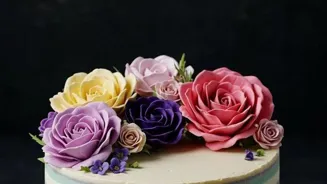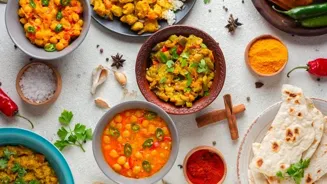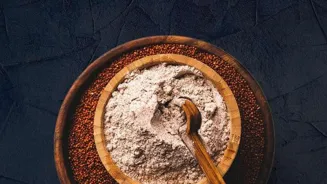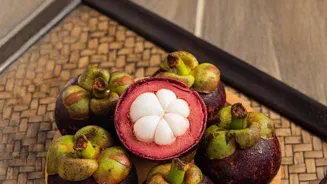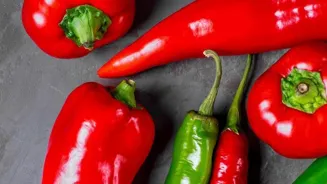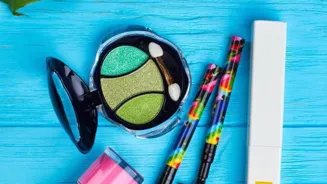Unlock the secrets to perfect cakes! Dive into the art of baking with precision and creativity. Find the magic in the kitchen!
Namaste and welcome, fellow baking enthusiasts! Ever dreamt of whipping up
a cake that's not just edible, but truly divine? A cake that makes your chai time even more special, and leaves your family and friends asking for seconds (or thirds)? Well, you've come to the right place!

Baking a perfect cake might seem daunting at first, but with a little know-how and a sprinkle of patience, anyone can master the art. This guide will break down the fundamentals, from understanding ingredients to mastering techniques, ensuring your cake-baking journey is a sweet success.
Let's get started on creating some magic in the kitchen, shall we?
Ingredients are key in cake-making; choose wisely for best results
First things first, let's talk about the key players – your ingredients. Think of them as the foundation upon which your cakey masterpiece will be built. Flour, the very base of most cakes, gives structure.
All-purpose flour is a good starting point, but experimenting with cake flour or whole wheat flour can add unique textures and flavors. Sugar not only sweetens but also contributes to moisture and tenderness.
Butter or oil adds richness and flavour; opt for unsalted butter so you can control the salt level. Eggs bind the ingredients together, provide structure, and add moisture. Leavening agents like baking powder or baking soda help the cake rise, creating that light and airy texture we all crave.
And of course, don't forget the flavour enhancers — vanilla extract, spices like cardamom or cinnamon, citrus zest, or even a touch of rose water can elevate your cake to new heights. Remember the quality of your ingredients will affect the final result.
Always buy the best quality you can within your budget.
Essential tools for baking a great cake without fancy gadgets
Now that we've got our ingredients sorted, let's dive into the crucial aspect of tools and equipment. While fancy gadgets can be tempting, you don't need a whole arsenal to bake a fantastic cake.
A good set of mixing bowls (stainless steel or glass are ideal), measuring cups and spoons (accurate measurements are key!), a whisk, a spatula, and a rubber scraper are essential.
An electric mixer (handheld or stand mixer) can be a lifesaver for creaming butter and sugar, but you can definitely achieve great results with a little elbow grease. Properly greasing and flouring your cake pans prevents sticking and ensures a clean release.
Parchment paper is another invaluable tool for lining pans, making removal even easier. Finally, an oven thermometer will help you ensure your oven is accurately calibrated, as oven temperatures can vary. Remember that having the right tools on hand makes the process smoother and more enjoyable.
Accurate measurement and mixing crucial in baking for perfect cakes
Let's discuss the significance of accurate measurement and mixing techniques. Baking, unlike cooking, involves chemistry. Precision is paramount. Using the right measuring tools and methods ensures the proper ratio of wet to dry ingredients, directly impacting the cake's texture and rise.
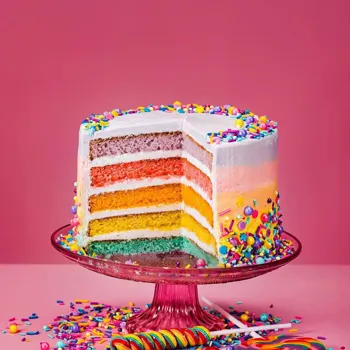
Too much flour can result in a dry, dense cake, while too little can lead to a flat, gummy one. Similarly, the way you mix your ingredients significantly affects the outcome. Overmixing can develop gluten, resulting in a tough cake, while undermixing can leave pockets of uncombined ingredients.
The creaming method (beating butter and sugar together until light and fluffy) is a common technique for incorporating air, which creates a tender crumb. Gently folding in dry ingredients prevents overmixing. It’s all about finding that balance.
Achieving perfect cake texture involves balancing wet/dry ingredients, mixing method, & baking time
One of the most common questions bakers face is how to achieve the perfect cake texture. The secret lies in several factors, starting with the balance of wet and dry ingredients, the mixing method, and the oven temperature.
As mentioned earlier overmixing or undermixing the ingredients will affect the cake’s the texture. Over baking also affects the texture of the cake and can lead to the cake being dry. Always ensure to adhere to baking timings and to check the cake. There are several methodes to check the cake.
This method include using a wooden toothpick, knife, or skewer. These are inserted in the middle of the cake for checking. When the toothpick/knife/skewer is removed it must be clean or it must contain only a few crumbs.
Troubleshoot common baking problems for perfect cakes
Let's delve into common baking problems and how to troubleshoot them. A sunken cake could be due to underbaking, too much liquid, or opening the oven door too early. A dry cake might result from overbaking, too much flour, or not enough fat.
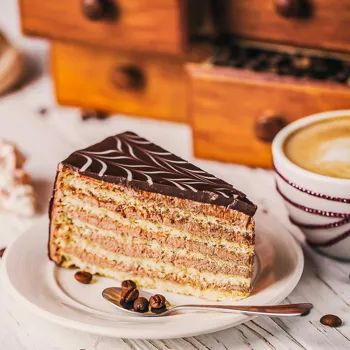
A dense cake is often caused by overmixing or not enough leavening. A cracked top can be a sign of too high an oven temperature. Don't despair! Most baking mishaps are easily fixable with a few adjustments to your recipe or technique. Keep a baking journal to note what changes and their effects.
Experimentation in baking leads to flavorful discoveries
Experimentation is key. Once you've mastered the basics, don't be afraid to venture beyond and try new recipes, flavors, and techniques. Adding dry fruits and nuts create a crunchy cake that tickles the tasete buds. Adding spices like cinnamon takes the cake to another level.
Maybe try using fresh fruit purees instead of extracts. The possibilities are endless! Baking is a journey of learning and discovery, so embrace the process, have fun, and enjoy the sweet rewards of your labor. Happy baking!
